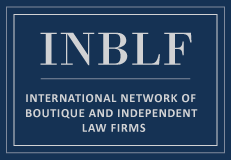Getting noticed and getting paid are challenges for every business. These challenges can be overwhelming in today’s digital world, where there is an overabundance of content. However, focusing on content may be a trap rather than the road to success.
Gennari Aronson, LLP recently hosted a conversation with Professor Bharat Anand of Harvard Business School to discuss his latest book, “The Content Trap.” In his book, Professor Anand addresses navigating business strategy in the fast-changing digital marketplace. He recommends that businesses should foster connections rather than focus exclusively on content. He demonstrates his point through various case studies across several industries including media companies and educational institutions, by examining what works and what failed and then discussing the strategies each company pursued.
Content is important, but creating and fostering connections with the content is the actual key to success. Professor Anand identifies three types of connections that businesses can cultivate through content – user connections, product connections, and functional connections. User connections allow the users of your product and content to connect with each other. These user connections make your content social. Just because you are reaching a wide audience does not mean that you are engaging that audience. Product connections involve focusing on complements to your core product. Complements include products and services that increase the value your core product delivers to users. Professor Anand recommended thinking outside of the box for complementary content – such as movie theatres providing child care services. Functional connections involve denying the age-old mantra of “copy your competitors.” The context matters and every decision you make in your company will affect the success of your content and connections. According to Professor Anand, “success comes from being different, not similar.”
Professor Anand stressed three important points:
- Don’t just create; create to connect.
- Don’t look at your business too narrowly; focus on complementary connections to strengthen your core products.
- Making connections is not a one-size-fits-all process – use your strengths and unique characteristics to create and foster connections.
Professor Anand’s book is available now via www.thecontenttrap.com. If you are interested in learning more or attending one our future events, please join our mailing list by contacting ceden@galawpartners.com.





